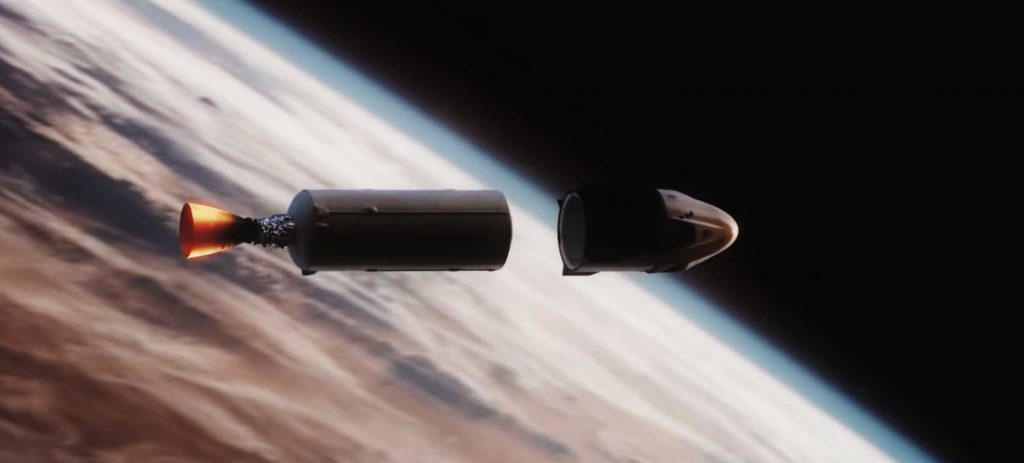On the heels of a brand new animation simulating the spacecraft’s next orbital launch milestone, SpaceX CEO Elon Musk has revealed a tentative schedule for Crew Dragon’s astronaut launch debut.
Known as Demo-2, short for Crew Dragon’s second orbital demonstration mission, the launch could make SpaceX the first commercial company in history to send astronauts to space (i.e. orbit), as well as the first private company to deliver astronauts to the International Space Station (ISS). If things go as planned over the next several months, that should kick off a new era where NASA will routinely rely on SpaceX (and Boeing) to ensure that the US has a continued presence in space.
The International Space Station has been continuously crewed by astronauts since October 31st, 2000, representing nearly two decades that humanity has had an uninterrupted presence in space. Supported by regular NASA Space Shuttle and Russian Soyuz launches that enabled space agencies to safely send astronauts to and from the space station, SpaceX’s Crew Dragon and Boeing’s Starliner are nearly ready to pick up the torch that NASA and the United States fumbled when the Shuttle was prematurely canceled in 2011.
Over the last five years, SpaceX has been working tirelessly to design, build, and test Crew Dragon – all in the name of ensuring that it will be one of the most reliable and capable human-rated spacecraft ever flown once it begins taking astronauts to and from the ISS. As with almost all human-rated spacecraft in history, Crew Dragon’s development has not been without its hurdles and detours, ranging from challenges with the spacecraft’s parachute recovery systems to a catastrophic capsule explosion during thruster testing.
As a result, SpaceX has put extra effort into optimizing and redesigning Crew Dragon’s many subsystems to ensure that all work exactly as intended. Thankfully, all of Crew Dragon’s development hurdles have occurred during testing specifically designed to reveal such problems, meaning that no humans have been harmed (or killed) over the course of the program. In the history of human spaceflight, it has often been the case that catastrophic spacecraft failure modes are only discovered after operational flights began, resulting in the deaths of numerous astronauts during Soyuz, Space Shuttle, and SpaceShipTwo – as well as three NASA astronauts during Apollo 1 ground testing.

Spaceflight is nevertheless a dangerous endeavor, at least for the time being, so it’s entirely possible that Crew Dragon will ultimately suffer accidents or failures during crewed missions, evidenced most recently by Starliner’s failure to reach the space station during the Boeing’s spacecraft’s first orbital launch. Still, both companies are working hard to ensure that even in the event of a failure, their spacecraft are able to protect their astronaut passengers and safely return them to Earth.
In line with that, SpaceX (unlike Boeing) opted to perform a live In-Flight Abort (IFA) test with Crew Dragon before allowing the spacecraft to begin astronaut launches. Scheduled to launch as early as January 11th, SpaceX will launch a Dragon spacecraft atop Falcon 9 and simulate a rocket failure during the most stressful point of launch. If Crew Dragon can fire up its abort thrusters and whisk its hypothetical passengers to safety, chances are that the spacecraft will be able to do the same at any other point during launch – from before liftoff all the way to orbit.
SpaceX has been developing its first human-rated spacecraft since it began build Cargo Dragon more than a decade ago – all paths for the company have ultimately pointed towards human spaceflight. According to CEO Elon Musk, the Crew Dragon spacecraft and Falcon 9 launch vehicle assigned to support the company’s inaugural astronaut launch will be in Florida and ready for flight as early as February 2020, a few-month delay compared to the often overly-optimistic executive’s previous Nov/Dec 2019 target.
Although the hardware could be ready to launch three months (or less) from now, Musk believes that the NASA preflight reviews that must follow will likely take “a few more months” – unfortunately likely given that Crew Dragon’s uncrewed launch debut (Demo-1) was likely ready for flight almost two months before NASA finally cleared SpaceX to launch.
Ultimately, as long as Crew Dragon’s IFA test goes well next month, it’s likely that the spacecraft will launch twice in the first half of 2020, potentially making history sometime in the second quarter.
Check out Teslarati’s newsletters for prompt updates, on-the-ground perspectives, and unique glimpses of SpaceX’s rocket launch and recovery processes.

(adsbygoogle = window.adsbygoogle || []).push({});
<!–
–>
var disqus_shortname = «teslarati»;
var disqus_title = «SpaceX's Crew Dragon astronaut launch debut schedule revealed by Elon Musk»;
var disqus_url = «https://www.teslarati.com/spacex-elon-musk-crew-dragon-astronaut-launch-schedule/»;
var disqus_identifier = «teslarati-125044»;

